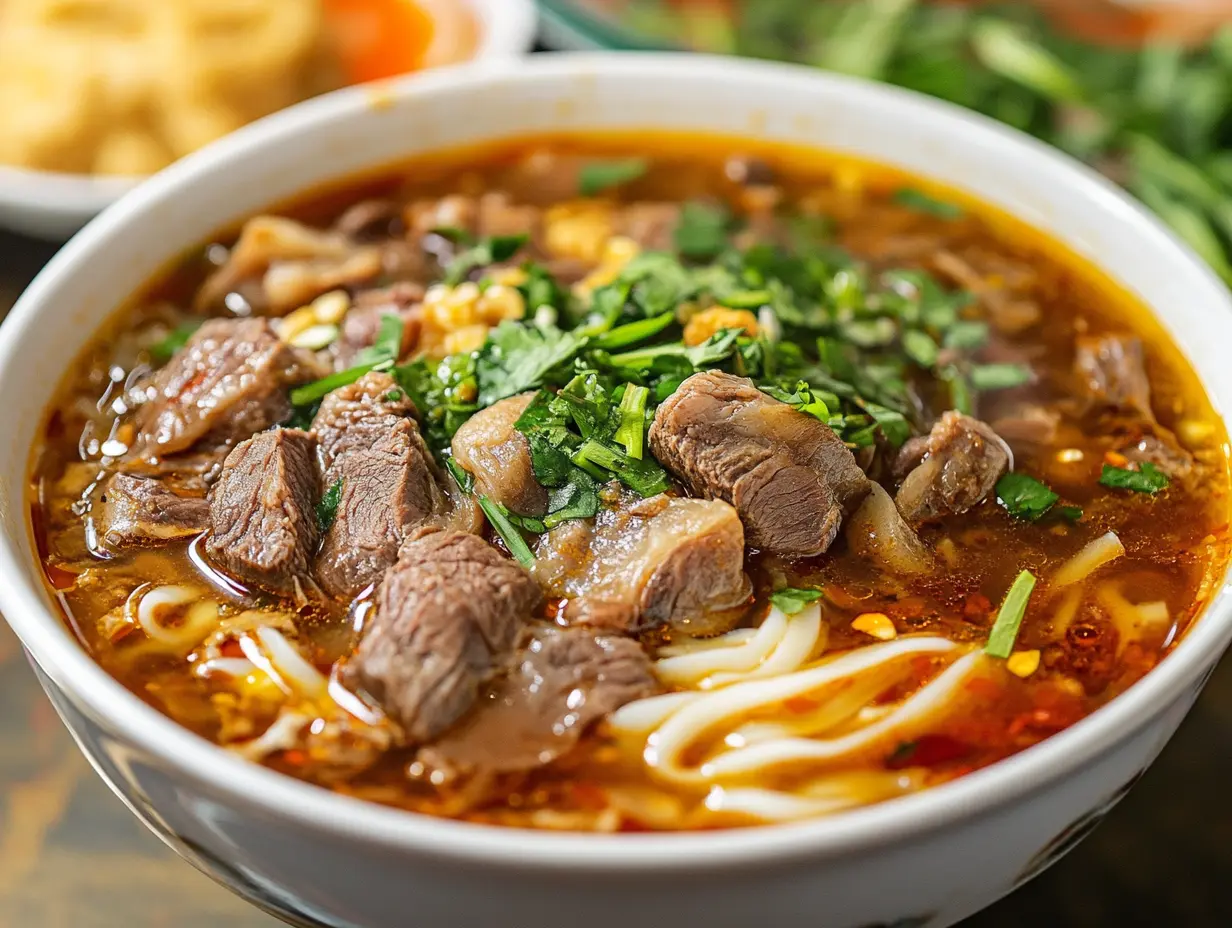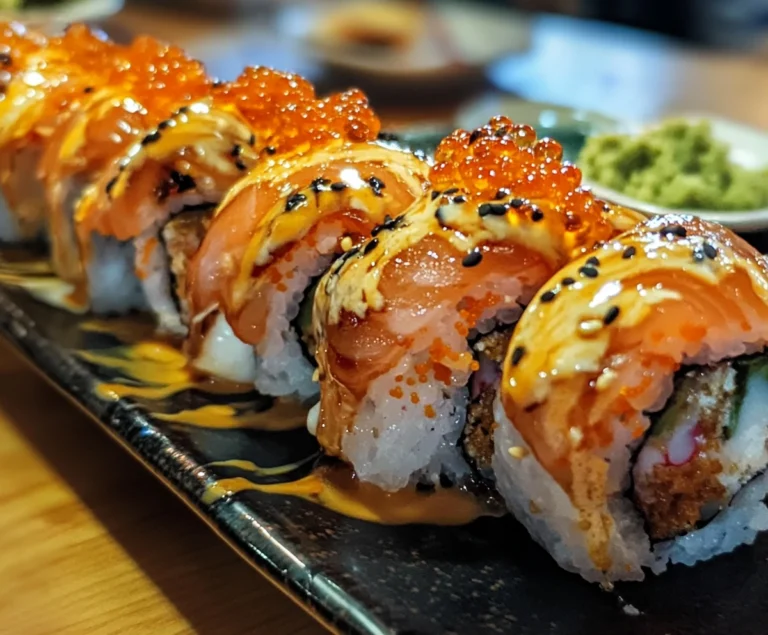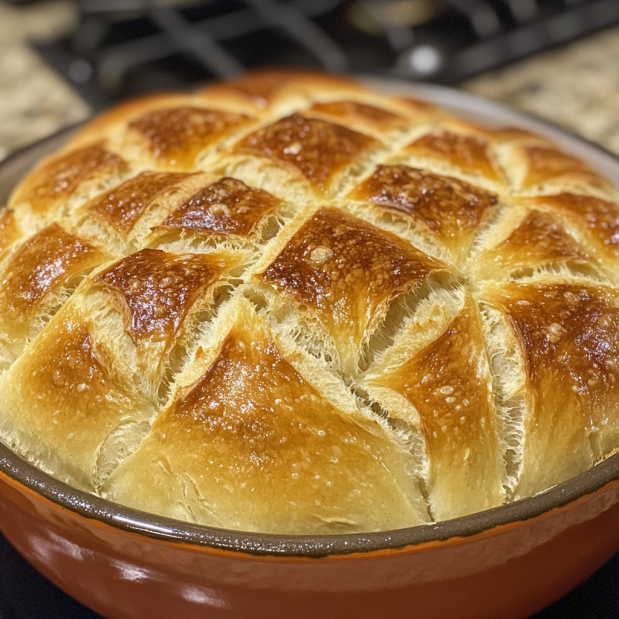When was beef noodle soup invented?: A Journey Across Cultures
Beef noodle soup invented, with its fragrant broth, tender beef, and hand-pulled noodles, stands as more than just a meal. This dish represents a rich culinary legacy forged through centuries of migration, cultural exchanges, and regional adaptations. From its humble beginnings in China, Beef noodle soup invented has evolved into a globally cherished dish, enjoyed in cities as diverse as Taipei, New York, Melbourne, and more. To truly appreciate its significance, we must explore its origins, examine regional variations, and trace its journey across the globe.
This article will take an in-depth look at the history of beef noodle soup, from its invention to its cultural importance and global reach. By the end, you will gain a new appreciation for one of the world’s most beloved dishes.
Early History of Noodles and Soup in China
Before exploring the specific creation of beef noodle soup, it’s important to understand the roles of noodles and soup in Chinese cuisine. For thousands of years, these two elements have shaped Chinese culinary traditions.
Noodles in Ancient China
Noodles have long held a significant place in Chinese cuisine, dating back thousands of years. In 2005, archaeologists discovered a bowl of well-preserved noodles in the Lajia site, located in China’s Qinghai province. These ancient noodles, made from millet, revealed how integral noodles were to early Chinese diets.
Noodle-making, particularly with wheat, became prominent during the Han Dynasty (206 BC – 220 AD). As wheat cultivation expanded in northern China, people began to make wheat-based foods like noodles, dumplings, and steamed buns. Noodles quickly became a staple because of their versatility—they could be served hot or cold, in broths or stir-fried, with a variety of accompaniments.
However, in these early periods, Chinese noodle dishes did not include beef. Instead, noodles often accompanied lighter meats like chicken or pork, paired with vegetable-based broths. The use of beef with noodles only emerged later, largely due to religious and cultural reasons.
Soup: A Pillar of Chinese Cuisine
For centuries, soup has played a crucial role in Chinese cuisine, valued for both its flavor and health benefits. In traditional Chinese culture, soups not only provided nourishment but also served medicinal purposes. Chinese chefs would often craft soups designed to promote balance in the body’s energy, or qi, according to traditional Chinese medicine.
Many meat-based broths featured chicken, pork, or fish, often enriched with herbs like ginseng and ginger to enhance the broth’s healing properties. A well-known Chinese proverb claims that “good soup can cure any illness,” underscoring its importance in society.
In contrast, beef remained largely absent from early Chinese soups and broths, primarily due to practical reasons. Chinese farmers relied on cattle for plowing fields, making cows too valuable to consume. Additionally, Buddhist teachings, which emphasized kindness toward animals, discouraged the consumption of beef in many parts of China.
The Introduction of Beef into Chinese Cuisine
For much of Chinese history, the use of beef in cooking was uncommon due to cultural and religious factors. Buddhist principles, which promoted the protection of animals, especially discouraged the consumption of cattle. These animals played a vital role in agriculture, so people viewed them as indispensable for farming.
However, during the Tang Dynasty (618–907 AD), China experienced major cultural shifts, particularly due to increased contact with foreign communities through the Silk Road. This ancient trade route connected China to Central Asia, the Middle East, and Europe, bringing not only goods but also new culinary influences.
The Tang Dynasty and the Silk Road
The Silk Road introduced many foreign ingredients and cooking techniques to China. Among the most significant were the halal dietary practices brought by Muslim traders, especially the Hui people, who settled in northwestern China. These Muslim communities included beef in their diets, marking the first major introduction of beef into Chinese cuisine.
The Hui Muslims’ influence spread in cities like Lanzhou, located in Gansu Province along the Silk Road. As this cultural exchange took root, beef began to feature more prominently in Chinese dishes, especially in areas where Muslim populations thrived. This marked the beginning of beef’s role in what would eventually become the iconic beef noodle soup.
The Birth of Beef Noodle Soup: Lanzhou’s Culinary Legacy
The origins of beef noodle soup trace back to Lanzhou, the capital of Gansu Province in northwestern China. Positioned along the Silk Road, Lanzhou became a melting pot where different cultures, languages, and cuisines intersected. The city’s Hui Muslim community played a central role in shaping its unique culinary traditions.
Ma Baozi and the Creation of Lanzhou Beef Noodle Soup
One of the most well-known stories of the dish’s origin centers around a Hui Muslim chef named Ma Baozi. Local legend holds that Ma Baozi developed the dish during the late Qing Dynasty, around the 19th century. He reportedly simmered beef bones for hours to create a clear and aromatic broth, then seasoned it with spices such as star anise, fennel, and cloves. He combined this flavorful broth with freshly pulled wheat noodles and thinly sliced beef, creating what is now known as Lanzhou beef noodle soup.
Although we cannot verify every detail of this story, Lanzhou beef noodle soup has indeed become one of China’s most iconic dishes, with an enduring legacy that spans generations.
Key Characteristics of Lanzhou Beef Noodle Soup
Lanzhou beef noodle soup features a simple yet perfect balance of flavors and textures. The key components include:
- Clear broth: Chefs craft the broth by simmering beef bones with a blend of spices over several hours. The result is a light yet flavorful broth that allows the natural flavors of the beef and spices to shine.
- Hand-pulled noodles: Lanzhou beef noodle soup uses hand-pulled noodles, or la mian, which are freshly prepared. These noodles, stretched and folded by hand, achieve a perfect balance of chewiness and tenderness.
- Aromatic spices: The soup incorporates spices such as star anise, fennel, ginger, and cloves, which give the broth a distinctive fragrance. The spices complement the beef without overwhelming its flavor.
- Thinly sliced beef: The beef, usually from brisket or shank, is slow-cooked until tender and sliced thinly. This tender meat, added just before serving, ensures a juicy and flavorful bite.
This harmonious combination of broth, noodles, spices, and beef sets Lanzhou beef noodle soup apart from other Chinese noodle dishes. Each component adds to the overall balance of the dish, creating a culinary experience that is both satisfying and comforting.
Regional Variations of Beef Noodle Soup in China
As beef noodle soup spread beyond Lanzhou, it began to evolve to suit different regional tastes across China. Each region’s unique ingredients and culinary traditions resulted in a variety of distinct versions of beef noodle soup.
Southern China’s Soy-Based Broths
In southern China, especially in cities like Guangzhou and Hong Kong, beef noodle soup developed a richer and darker flavor. Southern chefs began incorporating soy sauce into the broth, creating a soy-based version of the dish. This deeper, more savory broth contrasted with the lighter, clearer version from Lanzhou.
In addition to soy sauce, southern-style beef noodle soup often includes additional spices, garlic, and ginger to enhance its flavor. Some variations even incorporate vegetables like bok choy or pickled mustard greens, adding a fresh, slightly sour contrast to the richness of the broth.
Sichuan’s Spicy Beef Noodle Soup
In Sichuan Province, known for its bold and spicy cuisine, beef noodle soup takes on a fiery twist. Sichuan cuisine, famous for its mala flavor—a combination of numbing heat from Sichuan peppercorns and intense spiciness from chili peppers—transforms the dish into a spicier, heartier version.
The Sichuan version of beef noodle soup features a broth that is thicker and more robust, enriched with fermented bean paste, chili oil, and a heavy dose of Sichuan peppercorns. The result is a soup that leaves the mouth tingling, satisfying those who seek intense, complex flavors.
Taiwanese Beef Noodle Soup: A Modern Classic
While beef noodle soup originated in mainland China, its most famous modern version arguably comes from Taiwan. Taiwanese beef noodle soup, celebrated for its soy-based broth and braised beef, has become a national icon in Taiwan.
The Roots of Taiwanese Beef Noodle Soup
The history of Taiwanese beef noodle soup began in the mid-20th century when Chinese soldiers fleeing the Chinese Civil War brought their culinary traditions to Taiwan. Many of these soldiers hailed from northern China, where beef noodle soup was already popular. Over time, Taiwanese chefs modified the dish, giving it a flavor profile distinct from its mainland counterpart.
Defining Features of Taiwanese Beef Noodle Soup
Taiwanese beef noodle soup incorporates several unique characteristics:
- Soy-based broth: Unlike Lanzhou’s clear broth, Taiwanese beef noodle soup uses a soy-based broth made with soy sauce, tomatoes, and a blend of spices. This broth has a rich, savory flavor with hints of sweetness.
- Braised beef: Instead of thin slices of beef, the Taiwanese version features large chunks of braised beef, typically from the shank or brisket. The beef is slow-cooked until it becomes incredibly tender.
- Noodles: Similar to the Lanzhou style, Taiwanese noodles are freshly hand-pulled, providing a chewy and satisfying texture.
- Pickled mustard greens: To balance the richness of the broth, many Taiwanese variations of the dish include pickled mustard greens, adding a sour and slightly tangy contrast to the meal.
In Taiwan, beef noodle soup has grown into a national dish, celebrated by locals and visitors alike. The country even holds an annual Beef Noodle Soup Festival in Taipei, where chefs from across the island compete to create the best version of the dish.
The Global Spread of Beef Noodle Soup
As Chinese and Taiwanese communities migrated across the world, they carried their culinary traditions with them. Today, you can find beef noodle soup in cities as far-reaching as New York, Sydney, and London.
Fusion and Modern Takes on Beef Noodle Soup
In many places, chefs have embraced the fusion of traditional Chinese elements with local ingredients, creating new versions of beef noodle soup. In California, for example, some chefs use grass-fed beef or organic vegetables to elevate the dish with local, farm-to-table ingredients. Australian chefs have even experimented with adding native herbs like lemon myrtle to give the broth an Australian twist.
In these fusion varieties, chefs maintain the essential elements of beef noodle soup—noodles, beef, and broth—while incorporating new ingredients to reflect their regional surroundings. These modern interpretations highlight the dish’s versatility and its ability to adapt to various culinary landscapes.
American-Chinese Versions of Beef Noodle Soup
In the United States, particularly in cities like New York, San Francisco, and Los Angeles, beef noodle soup has become a staple in Chinese and Taiwanese restaurants. Many of these establishments serve authentic versions of Lanzhou and Taiwanese beef noodle soups, drawing in both Chinese immigrants and curious food lovers.
However, some American-Chinese restaurants have streamlined the dish to cater to busy diners. Pre-packaged noodles or ready-made broth allow for quicker preparation while still providing a satisfying experience for those craving beef noodle soup.
Cultural Significance of Beef Noodle Soup
Beyond its role as a beloved meal, beef noodle soup carries deep cultural meaning. It represents resilience, cultural blending, and the powerful connection between food and identity.
Pride in Lanzhou
In Lanzhou, beef noodle soup serves as a symbol of local pride. The dish stands as a testament to the city’s rich cultural history, shaped by the influence of the Hui Muslim community along the Silk Road. Today, visitors to Lanzhou seek out the city’s famous noodle shops, eager to experience the authentic flavors that have been perfected over centuries.
The city even holds noodle-pulling competitions, where expert chefs demonstrate the artistry of hand-pulled noodles, highlighting the skill and craftsmanship behind the dish.
Taiwan’s Beef Noodle Soup Festival
In Taiwan, beef noodle soup has become a national treasure. Every year, the Taipei Beef Noodle Soup Festival brings together chefs from across the island, all vying for the title of the best beef noodle soup. This festival celebrates the dish’s cultural importance and underscores Taiwan’s culinary creativity, showcasing both traditional recipes and innovative new versions.
Nostalgia and Connection for the Chinese Diaspora
For many Chinese and Taiwanese immigrants living abroad, beef noodle soup represents a powerful connection to home. Passed down through generations, family recipes for beef noodle soup allow families to preserve their culinary heritage and maintain a sense of cultural identity. The act of preparing and sharing beef noodle soup serves as a way to stay connected to one’s roots, even while living far from home.
Chinese and Taiwanese immigrants often open restaurants serving beef noodle soup, helping their communities maintain a link to their homeland. These eateries become gathering places where people can share food, memories, and a sense of belonging.
Conclusion: The Ever-Evolving Journey of Beef Noodle Soup
From its beginnings in Lanzhou to its global status as a beloved dish, beef noodle soup’s journey showcases the unifying power of food. Over the centuries, the dish has adapted to different cultural contexts, continuing to evolve as it spreads to new regions and generations.
Whether you prefer Lanzhou’s clear broth, Taiwan’s braised beef version, or a modern fusion twist, beef noodle soup remains a comforting and timeless dish. Its enduring popularity reflects not only its delicious flavors but also the rich cultural significance that makes it so special. This dish will undoubtedly continue to delight people worldwide, carrying with it a rich history and spirit that connects cultures and people across borders.







